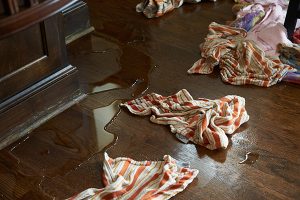Mountains of used, old and even never-out-of-the-box items are likely to accumulate behind the closed doors of an individual suffering from hoarding issues. Apart from extreme collecting, hoarding is a psychological issue, categorized as an obsessive-compulsive disorder. The hoarder is unable to throw out anything without experiencing severe anxiety. As a result, piles of newspaper, spanning decades, accumulate; rotten food and food packaging lay wasting in the kitchen; dozens of plastic containers become a fixture in the hoarder’s home; even fingernail clippings and hair are “saved” by extreme hoarders.
The growing mess of hoarded goods and items used in daily life make the hoarder’s living space unsanitary and uninhabitable. Bacteria grows amidst decay; and where a hoard exists, harmful pathogens flourish. Clutter blocking exits, like doorways and windows, poses as a deadly fire hazard. Hoarding makes effectively living in the home a near impossibility. The hoarder also experiences an inability to function in everyday life due to this damaging psychological condition.
Fortunately, mental health programs have recently developed to treat the condition known as hoarding. Behavioral therapies combined with drug treatments often serve to successfully heal those who suffer from hoarding problems.

Develop Trust
Before you contact a therapist who specializes in hoarding issues, take steps to connect with the person experiencing hoarding problems. Develop a mutual trust to let the individual know you will support them once the cleanup is accomplished. Forming a trusting relationship with the person hoarding, whether a family member or friend, will open communication. You can discuss safety concerns, promise confidentiality about the unnatural activity (until a hoarding cleanup service is contacted) and probe into the underlying cause of hoarding, which can be due to a traumatic experience, like a death of a loved one or a history of abuse.
Start the cleanup process by initiating a task list of things that need a new “home”. Using compassionate language throughout the process helps you, as a primary source of support, from talking down to the individual or treating him or her like a criminal. Individuals suffering from hoarding may be very intelligent and educated; however, they are far from criminals.
Protect Yourself
Give the individual a reasonable timeframe for the cleanup process. You can then begin by arming yourself with protective gear: thick gloves, goggles, work boots and particle filtering masks. Remember, you will be walking through knee-deep garbage, from rotten food to rusty nails to hazardous and flammable materials. The risks associated with cleaning up the unknown is high. Proceed with caution, and take ample safety measures to protect yourself.
Start Slow
The cleanup process will be gradual. Attempting to discard the contents of the hoarder’s home within a weekend will only be an overwhelming hurdle. Experts suggest starting with a small room, such as the bathroom, to lessen feeling engulfed. Once items have been cleared out of the manageable rooms, make a deliberate effort to clear out other sections of the house, with breaks in between. The emphasis is on clearing out the clutter, not cleaning—yet. Portable dumpsters or massive bins, like Pods, are useful containers in which to throw out the vast amounts of rubble.

Sort the Mess
Clearing out the house leaves piles of items to be sorted through. The sorting process distinguishes what items can be salvaged and what goods ought to be discarded. Sorting can be emotional for the hoarder. Oftentimes, saved items may have an emotional value to the person hoarding. A saved popcorn bag, for instance, may remind the individual of a first date with a late husband. A newspaper from 1963 may hold important news for the hoarder that makes it difficult to surrender.
Work with the individual to determine what you may assist with immediately and what may be negotiated at a later point in the process. The cleanup requires constant compassion. Judging the individual only compromises trust and the cleanup process. Patience is also necessary. The hoarder has become accustomed to the unsanitary living situation over several years.
Once the hoarder realizes the home’s uninhabitable state, parting with the items becomes slightly less complicated. Negotiate what goods can be donated. Advise the individual that certain items can be better off when used by someone who truly needs them.
Sanitize the Home
Once the home is free of the disorder, cleansing the home is the next safest step. Keep in mind that thorough decontamination can be handled by a professional cleaning and restoration service. If you choose to sanitize the home yourself, be prepared to disinfect every inch of the home, from the ceilings to the walls to the floorboards. Mold infestations are a likely concern in a hoarder’s home. When mold is present, contact a mold remediation service to properly remove all traces of mold, disinfect, deodorize and restore the property. Structural damage and major renovations are best handled by professionals.
When helping a friend or loved one overcome hoarding issues becomes an insurmountable task, consider contacting a professional hoarding cleaning service. Individuals suffering from hoarding rarely make the call to a professional themselves due to embarrassment; loved ones or friends usually take the first step.
ServiceMaster Kwik Restore is a hoarding cleaning service that places importance in developing relationships of trust with individuals suffering from hoarding issues. A compassionate approach to the cleanup process ensures efficiency and ease. ServiceMaster Kwik Restore works with both the individual and supporters to develop a plan that thoroughly cleans out the premises and restores the home.
In addition to offering professional consideration to the hoarder’s condition, ServiceMaster Kwik Restore technicians work to decontaminate the area, deodorize the home and safely dispose of waste. The professional team at ServiceMaster Kwik Restore is equipped to handle biohazardous materials, like dead animals, mold or bodily fluids, found in the hoarder’s home. We always operate in compliance with EPA, OSHA and the Department of Transportation. ServiceMaster Kwik Restore reliably serves the northern Illinois and southern Wisconsin communities.

